Author Photo And Bio
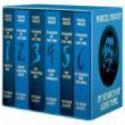 1. In Search of Lost Time by Marcel Proust (1913–27). It’s about time. No, really. This seven-volume, three-thousand-page work is only superficially a mordant critique of French (mostly high) society in the belle époque. Both as author and as “Marcel,” the first-person narrator whose childhood memories are evoked by a crumbling madeleine cookie, Proust asks some of the same questions Einstein did about our notions of time and memory. As we follow the affairs, the badinage, and the betrayals of dozens of characters over the years, time is the highway and memory the driver.
1. In Search of Lost Time by Marcel Proust (1913–27). It’s about time. No, really. This seven-volume, three-thousand-page work is only superficially a mordant critique of French (mostly high) society in the belle époque. Both as author and as “Marcel,” the first-person narrator whose childhood memories are evoked by a crumbling madeleine cookie, Proust asks some of the same questions Einstein did about our notions of time and memory. As we follow the affairs, the badinage, and the betrayals of dozens of characters over the years, time is the highway and memory the driver.
 2. Middlemarch by George Eliot (1871–72). Dorothea Brooke is a pretty young idealist whose desire to improve the world leads her to marry the crusty pedant Casaubon. This mistake takes her down a circuitous and painful path in search of happiness. The novel, which explores society’s brakes on women and deteriorating rural life, is as much a chronicle of the English town of Middlemarch as it is the portrait of a lady. Eliot excels at parsing moments of moral crisis so that we feel a character’s anguish and resolve. Her intelligent sympathy for even the most unlikable people redirects our own moral compass toward charity rather than enmity.
2. Middlemarch by George Eliot (1871–72). Dorothea Brooke is a pretty young idealist whose desire to improve the world leads her to marry the crusty pedant Casaubon. This mistake takes her down a circuitous and painful path in search of happiness. The novel, which explores society’s brakes on women and deteriorating rural life, is as much a chronicle of the English town of Middlemarch as it is the portrait of a lady. Eliot excels at parsing moments of moral crisis so that we feel a character’s anguish and resolve. Her intelligent sympathy for even the most unlikable people redirects our own moral compass toward charity rather than enmity.
 3. The Good Soldier by Ford Madox Ford (1915). A novel made seminally modernist through an unreliable narration that is part cubist, part Freudian, it tells the story of the prissy and rather thick John Dowell and his wife Florence who repeatedly meet British soldier Edward Ashburnham and his wife over the years at various upper-crust European spas. Dowell’s blindness to Edward and Florence’s hidden-in-plain-sight affair finally lifts, but his class solidarity with the man he calls a “good soldier” endures —a tension that creates an exquisite portrait of denial and the death throes of Edwardian gentility.
3. The Good Soldier by Ford Madox Ford (1915). A novel made seminally modernist through an unreliable narration that is part cubist, part Freudian, it tells the story of the prissy and rather thick John Dowell and his wife Florence who repeatedly meet British soldier Edward Ashburnham and his wife over the years at various upper-crust European spas. Dowell’s blindness to Edward and Florence’s hidden-in-plain-sight affair finally lifts, but his class solidarity with the man he calls a “good soldier” endures —a tension that creates an exquisite portrait of denial and the death throes of Edwardian gentility.
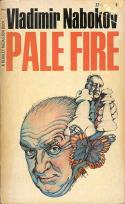 4. Pale Fire by Vladimir Nabokov (1962). “It is the commentator who has the last word,” claims Charles Kinbote in this novel masquerading as literary criticism. The text of the book includes a 999-line poem by the murdered American poet John Shade and a line-by-line commentary by Kinbote, a scholar from the country of Zembla. Nabokov even provides an index to this playful, provocative story of poetry, interpretation, identity, and madness, which is full to bursting with allusions, tricks, and the author’s inimitable wordplay.
4. Pale Fire by Vladimir Nabokov (1962). “It is the commentator who has the last word,” claims Charles Kinbote in this novel masquerading as literary criticism. The text of the book includes a 999-line poem by the murdered American poet John Shade and a line-by-line commentary by Kinbote, a scholar from the country of Zembla. Nabokov even provides an index to this playful, provocative story of poetry, interpretation, identity, and madness, which is full to bursting with allusions, tricks, and the author’s inimitable wordplay.
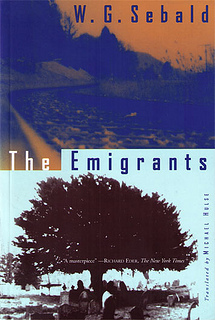 5. The Emigrants by W. G. Sebald (1992). The German writer’s works are melancholy compressions of life stories lined with large, historical themes. The Emigrants presents four portraits of exile: a doctor who flees to England, a persecuted teacher who takes his own life, a relative of Sebald’s who receives shock treatment in an American sanatorium, and a painter who moves to Manchester to escape the gathering Holocaust. Sebald’s haunted, almost hypnotic prose is juxtaposed with numerous photographs, which give the stories the feel of powerful documentaries. “And so they are ever returning to us,” he writes, “the dead.” Sebald is their archivist.
5. The Emigrants by W. G. Sebald (1992). The German writer’s works are melancholy compressions of life stories lined with large, historical themes. The Emigrants presents four portraits of exile: a doctor who flees to England, a persecuted teacher who takes his own life, a relative of Sebald’s who receives shock treatment in an American sanatorium, and a painter who moves to Manchester to escape the gathering Holocaust. Sebald’s haunted, almost hypnotic prose is juxtaposed with numerous photographs, which give the stories the feel of powerful documentaries. “And so they are ever returning to us,” he writes, “the dead.” Sebald is their archivist.
 6. A Legacy by Sybille Bedford (1956). (See David's appreciation below.)
6. A Legacy by Sybille Bedford (1956). (See David's appreciation below.)
 7. The Importance of Being Earnest by Oscar Wilde (1895). “The truth is rarely pure and never simple,” one character remarks in Wilde’s clever comedy about double identities. And white lies are even more complicated, as two young Englishmen of leisure learn when they try to avoid undesirable social obligations by claiming their noble services are required by needy (and imaginary) friends. When the worlds of their “friends” and fiancées collide, their confabulations turn to witty farce.
7. The Importance of Being Earnest by Oscar Wilde (1895). “The truth is rarely pure and never simple,” one character remarks in Wilde’s clever comedy about double identities. And white lies are even more complicated, as two young Englishmen of leisure learn when they try to avoid undesirable social obligations by claiming their noble services are required by needy (and imaginary) friends. When the worlds of their “friends” and fiancées collide, their confabulations turn to witty farce.
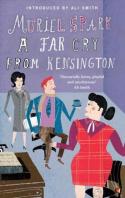 8. A Far Cry from Kensington by Muriel Spark (1988). Like all of Spark’s work, this novel is hard to define. Metaphysical farce? Literary mystery? At bottom it is a dark, elegant, hilarious tale centered on the zaftig widow Mrs. Hawkins. She spends her days and evenings giving advice to her eccentric rooming house mates and her coworkers in book publishing. Blackmail, suicide, and a crash diet power this story, but it is Spark’s all-too evident disgust with the business end of literature that gives the story its special kick.
8. A Far Cry from Kensington by Muriel Spark (1988). Like all of Spark’s work, this novel is hard to define. Metaphysical farce? Literary mystery? At bottom it is a dark, elegant, hilarious tale centered on the zaftig widow Mrs. Hawkins. She spends her days and evenings giving advice to her eccentric rooming house mates and her coworkers in book publishing. Blackmail, suicide, and a crash diet power this story, but it is Spark’s all-too evident disgust with the business end of literature that gives the story its special kick.
 9. The Beginning of Spring by Penelope Fitzgerald (1988). “It is Jane Austen crossed with Chekhov and Turgenev,” observed A. S. Byatt of this witty domestic novel set in Moscow on the eve of war and revolution. In the spring of 1913, Frank Reid’s wife leaves him and their three children to return to England. Frank, who was born in Russia and runs the print shop his British father founded there, deplores change. Character, not plot, rules Fitzgerald’s fictions; with subtlety and insight she reveals him navigating his new circumstances (and hoping for his wife’s return) while dealing with a host of vividly drawn, often idiosyncratic characters.
9. The Beginning of Spring by Penelope Fitzgerald (1988). “It is Jane Austen crossed with Chekhov and Turgenev,” observed A. S. Byatt of this witty domestic novel set in Moscow on the eve of war and revolution. In the spring of 1913, Frank Reid’s wife leaves him and their three children to return to England. Frank, who was born in Russia and runs the print shop his British father founded there, deplores change. Character, not plot, rules Fitzgerald’s fictions; with subtlety and insight she reveals him navigating his new circumstances (and hoping for his wife’s return) while dealing with a host of vividly drawn, often idiosyncratic characters.
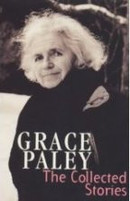 10. Stories of Grace Paley (1922– ). Paley’s political beliefs inform her stories, but she never writes cant. Her Greenwich Village surroundings infuse her work, making New York City seem like a small town. Her stories of what she calls “everyday life, kitchen life”—of frustrated wives, knife-wielding children, and cold men —are written in the freshest, loosest, most modern language imaginable.
10. Stories of Grace Paley (1922– ). Paley’s political beliefs inform her stories, but she never writes cant. Her Greenwich Village surroundings infuse her work, making New York City seem like a small town. Her stories of what she calls “everyday life, kitchen life”—of frustrated wives, knife-wielding children, and cold men —are written in the freshest, loosest, most modern language imaginable.
Appreciation of Sybille Bedford’s A Legacy by David Leavitt
A Legacy, Sybille Bedford’s remarkable first novel, might most simply be described as the story of two houses. “One was outrageously large and ugly,” Bedford tells us in the opening paragraph; “the other was beautiful. They were a huge Wilhelminian town house in the old West of Berlin, built and inhabited by the parents of my father’s first wife, and a small seventeenth-century château and park in the South, near the Vosges, bought for my father by my mother.”
So Bedford sets us down, with remarkable velocity and confidence, right in the middle of the world to which she is going to devote the next 360 pages. This is the world of Germany before the Second World War. The owners of the Wilhelminian townhouse are Jews; the heroine’s father is a Catholic aristocrat living in a sort of splendid rural poverty. As she is “bundled to and fro” between these two houses, our narrator —a version of Bedford herself —describes for us not just the struggle of her own growing up, but the complex intermingling of three very different families, as well as the rumblings of social and political change that underlie and ultimately disrupt the domestic and marital dramas in which she is enmeshed.
Because Bedford published A Legacy in 1956, her knowledge of what was to come invests the novel with an air of fragility and foreboding. The prose is stunning; raised in a mire of European languages, Bedford clung to English as a life raft, and she shows her gratitude by employing her adopted language with a grace and agility to rival Henry James’s. Yet what is perhaps most astonishing about this astonishingly rich novel —more memorable, for me, even than E. M. Forster’s Howards End, the other great English novel about houses —is the deftness with which its author reconciles two literary virtues that in other hands might seem irreconcilable: intimacy and grandeur.